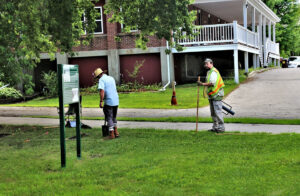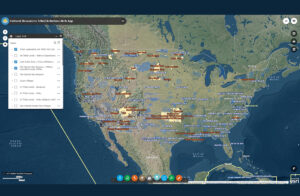CEMML has supported military readiness and resource conservation for more than three decades. Our experience and the resources of CSU allow us to tailor and apply innovative, practical methods to meet the needs of diverse managers of public lands.
CEMML works closely with the Department of Defense, US Army Corps of Engineers, National Park Service, and other departments and agencies through cooperative agreements, grants, and contracts. Our resource management and planning, research, education, and outreach efforts inform military and other federal managers as they meet their dual mandates of using and conserving public-trust resources.
On-Site Staffing
A high proportion of CEMML’s researchers and technicians work full-time at federal and military installations. The strategic placement of staff at these installations facilitates consistent service and problem-solving.
Research
CEMML also employs a diverse range of professionals directly at the CSU campus. CEMML is part of a land grant university that has one of the most comprehensive natural and cultural resource colleges in the nation.
Latest CEMML Stories

CEMML archaeological survey explores early 20th century history of Fort McCoy
An archaeological survey conducted by CEMML personnel in the summer of 2022 was initially meant to investigate the creation of several hundred concrete tent pads at Fort McCoy, Wisconsin. Research into the tent pads, dating from around the early 20th century, also unearthed additional information about other possible known archaeological features and sites around what is referred to as “Old Camp McCoy.”

Canine detectives help locate long-forgotten burials at a Virginia military base
Mulberry Island, Virginia, the location of Joint Base Langley-Eustis, has a long history of human habitation, dating back 10,000 years. The area has more than 230 archaeological sites, including cemeteries with unmarked graves. CEMML, in partnership with the Fort Eustis Cultural Resources Program, is using human remains detection dogs to help identify unmarked burial sites to better understand, honor, and preserve the area’s rich history.

CEMML partnership helps ensure Native American voices are heard in military planning
Much of the roughly 26 million acres that the Department of Defense oversees nationwide was once occupied by Native American tribes. Military installations are legally required to consult with interested tribes when carrying out projects that affect natural and cultural resources. A tool developed by CEMML and the Air Force Civil Engineer Center helps determine which tribes may have an interest in an installation’s land or airspace.
Share this page on social media